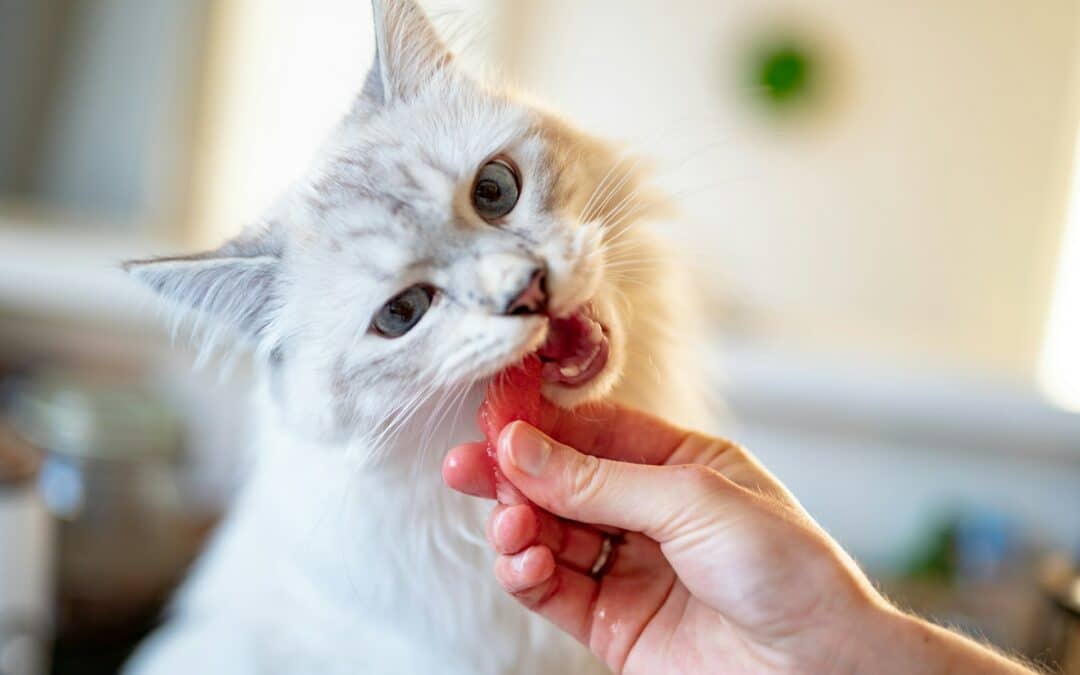Are grain-free diets good for cats? Many people assume that because cats are carnivores, they should only eat meat. However, good nutrition isn’t that simple. Even though cats need to eat a lot of protein, they can’t get all the nutrients they need from meat alone.
Grain-free cat food is often marketed as a healthier alternative to other cat food that contains ingredients like corn, rice, or wheat. The truth is, that unless there is a medical reason—like an allergy or an inflammatory disease—there’s no need to feed your cat a grain-free diet.
Should Cats Eat Only Meat?
Unlike dogs, who are omnivores, cats are obligate carnivores. This means that cats eat meat by necessity, because they can’t absorb all the nutrients they need from plants. That’s why it would be harmful to feed your cat a plant-based diet. However, feeding your cat only meat can cause a nutritional imbalance as well, because cats need more than just meat to thrive.
In the wild, cats get all the nutrients they need from the animals they kill for prey. They even get most of their water that way. However, that doesn’t mean that cats should eat only meat.
A key thing to realize is when cats kill small animals and birds for food, they eat more than just the flesh—they also eat the guts, probably some bone, skin, fur, or feathers, and maybe even the contents of that animal’s stomach. That’s why cat food has other ingredients like grains and animal by-products.
Are Raw Food Diets Good for Cats?
Raw diets for pets have been trending again lately. It seems like every time we watch tv, there’s another commercial for fresh pet food. They tug at your heartstrings by implying that your pet would rather not eat that dry, processed kibble. They claim that eating a diet closer to that of their wild ancestors is healthier.
However, a raw food diet isn’t something you should automatically consider good for your cat. In spite of their high price tags, fresh foods for pets are not necessarily better than canned or dry foods. They can even pose health risks, because raw foods are easily contaminated. The chances of exposure to pathogens like e. coli and salmonella, that are dangerous to both humans and pets, are much higher with raw food.
Choose Low-Carb Over Grain-Free
Instead of focusing on trendy diets like raw food or grain-free, look for cat food that is high in protein and low in carbohydrates. Eating too many carbs can trigger obesity in cats, but even though grains are high in carbohydrates, that doesn’t mean that grain-free diets are good for cats altogether.
Adult cats should be getting the majority of their calories from protein and fat, and most commercial cat foods are formulated that way. As long as you’re feeding your cat the right amount of food and making sure they get a little exercise, they should be able to maintain a healthy weight.
If You Have Questions About What to Feed Your Cat, We Can Help!
Before you start feeding your cat a raw food or grain-free diet, it’s a good idea to talk to a vet. We can answer all of your questions about your cat’s dietary needs and advise you on which foods will best promote their health and longevity. Your local vets at Anasazi Animal Clinic in Gilbert, Arizona, are here to help! Make an appointment for a wellness exam and nutrition consultation today.
Photo by Piotr Musioł on Unsplash used with permission under the Creative Commons license for commercial use 5/10/2024.

